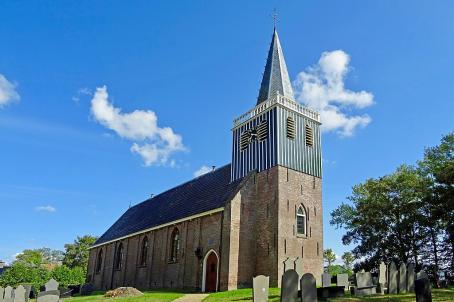Bartholomeus Church

Between Blauwhuis and IJlst, along the ancient winding dikes that protected the people in former times against the Middelzee, is the church of Westhem. It lies on a mound and is dedicated to Saint Bartholomew.
About this building
Westhem is located southeast of Blauwhuis on the Hemdijk. The Bartholomeus Church is a bit lost in the landscape. The current church was built in 1708 to replace the medieval church. The saddleback tower dates from the 14th century and is therefore much older than the nave of the church. The tower has been erected in large cloister mops. On the ridge there is a weather vane from about 1700. In the tower there are two bells, the oldest of which dates from 1353. The edge of this clock has the following inscription: Bartolomeus dibaphus St. rex ex immaculata mater Jesu. Ave Maria (Bartolomeus, the purple-clad, the holy king and the immaculate mother of Jesus, Hail Mary). The clock also mentions the name of Pastor Luidulfrus. The newer clock dates from 1639. The Local Commission of Westhem has for many years been a loyal participant in the Saturday afternoon openings in the framework of 'Cherkadaad'. Concert and exhibitions take place regularly. Furthermore, the romantic church is available for mourning and wedding services.



